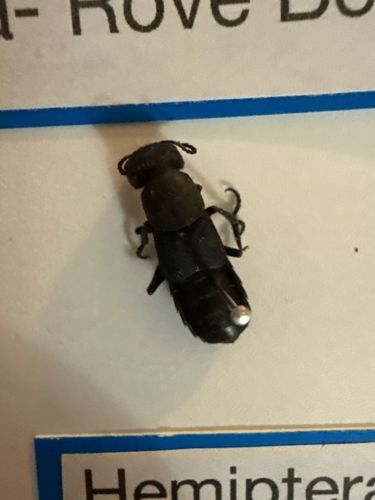Rove Beetle
Scientific Name: Staphylinidae (various genera)
Order & Family: Order: Coleoptera, Family: Staphylinidae
Size: Generally 1-35 mm, but most are 2-8 mm.

Natural Habitat
Found in a wide range of habitats including leaf litter, under stones and bark, decaying organic matter, fungi, carrion, and sometimes associated with ant or termite nests. Some are aquatic or semi-aquatic.
Diet & Feeding
Most rove beetles are predatory, feeding on other small invertebrates such as mites, springtails, insect larvae, and nematode worms. Some species are scavengers, feeding on decaying plant or animal matter, while a few are fungivores or feed on pollen and spores.
Behavior Patterns
Rove beetles are typically fast-moving and active, often running and flying. Many species exhibit a characteristic behavior of raising their abdomen when disturbed or running. They play important ecological roles as predators and decomposers. Their life cycle typically involves complete metamorphosis (egg, larva, pupa, adult).
Risks & Benefits
Benefits: Many species are beneficial as biological control agents, preying on pests in agricultural and garden settings. They also contribute to decomposition processes in ecosystems. Risks: A few species, particularly in tropical regions, can produce defensive chemicals (pederin) that can cause skin irritation or blistering if handled, known as 'dermatitis linearis'.
Identified on: 10/18/2025